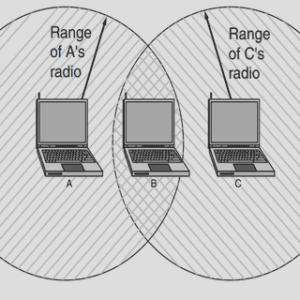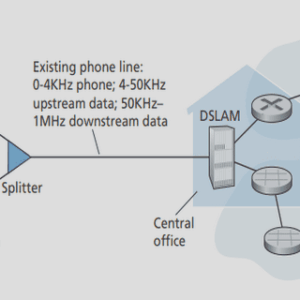(Downloads - 0)
For more info about our services contact : help@bestpfe.com
Table of contents
1 General Introduction
1.1 Motivation and purpose of this thesis
1.2 Scope and contributions
1.3 Structure
1.4 How to read this thesis
1.5 Publications
2 A Modern System Design Framework
2.1 Introduction
2.2 On the complexity of developing modern system design methods
2.3 Efficient use of computer power: convex optimisation
2.4 Modern systems representation via LFT
2.5 Dissipative systems characterisation
2.6 A unifying tool: the KYP Lemma
2.7 Conclusion
3 Passive Electronic Filters: Description and Design Problem
3.1 Introduction
3.2 Passive electronic filters: description and properties
3.2.1 Components modelling
3.2.2 Impedance and scattering descriptions
3.2.3 A particular electrical interconnection: the ladder topology
3.3 Design problem
3.3.1 Problem formulation
3.3.2 Problem simplification for lossless passive filters
3.4 Systematic filter design methods: a historical perspective
3.5 Summary
4 Design Approaches of Passive Electronic Filters
4.1 Introduction
4.2 Design approach 1: elements-values tuning
4.2.1 Introduction
4.2.2 Port-Hamiltonian Systems representations, modelling, analysis
4.2.2.1 PHS DAE representations
4.2.2.2 Modelling procedure and illustrations
4.2.2.3 Analysis of the resulting scattering matrix S
4.2.3 Design of electronic filters with a DAE PHS representation
4.2.3.1 PHS DAE representation synthesis as a BMI problem
4.2.3.2 Getting a particularly simple BMI form
4.2.4 Resolution of BMI optimisation problems
4.2.5 Application on a simple example
4.3 Design approach 2: realisable filter synthesis
4.3.1 Introduction
4.3.2 Frequency filter synthesis
4.3.3 Circuit synthesis
4.3.3.1 Realisation conditions of LC ladder filters
4.3.3.2 Realisation conditions of T-ladder filters
4.3.3.3 Realisation conditions of Ts, Tp-ladder filters
4.4 Summary and conclusion
5 Frequency LFT Filter Synthesis
5.1 Introduction
5.2 Problem formulation for LFT filters in a repeated T(s)
5.3 LFT filter synthesis with T(s) = 1s
5.3.1 Finite-dimensional convex formulation
5.3.1.1 Finite dimensional parametrisation
5.3.1.2 Convex formulation
5.3.2 Magnitude synthesis
5.3.3 Spectral factorisation
5.3.3.1 ARE, ARI and spectral factorisation
5.3.4 Synthesis procedure
5.3.4.1 Reverse parametrisation
5.3.4.2 On the choice of the representation matrices of B(s)
5.3.4.3 Explicit synthesis procedure
5.4 LFT filter synthesis with dissipative T(s)
5.4.1 Finite-dimensional convex formulation
5.4.2 Magnitude synthesis
5.4.3 Spectral factorisation
5.4.3.1 Spectral factorisation with lossless dissipative T(s)
5.4.3.2 Lossy spectral factorisation with dissipative T(s)
5.4.4 Generalised synthesis with factorisation error management
5.4.5 Synthesis procedures and numerical examples
5.4.5.1 Lossless dissipative T(s)
5.4.5.2 General dissipative T(s)
5.5 On the extension to 2D LFT filters synthesis
5.5.1 Conservative finite-dimensional convex formulation
5.5.1.1 Finite-dimensional parametrisation
5.5.1.2 Convex formulation
5.5.2 Positive rational function synthesis
5.5.3 Lossy spectral factorisation
5.5.4 Synthesis with factorisation error management
5.5.5 Synthesis procedure and numerical example
5.6 Summary
6 Design Examples
6.1 Design example of an LC-resonator ladder filter
6.1.1 Synthesis of a realisable W(T(s))
6.1.1.1 Magnitude synthesis under realisation constraints
6.1.1.2 Spectral factorisation
6.1.2 Elements value extraction
6.1.2.1 Elements value extraction
6.1.2.2 Application to the example
6.1.3 Order comparison with Butterworth and Chebyshev I filters
6.2 Design example of an AW-resonator ladder filter
6.2.1 2D LFT filter synthesis with some realisation constraints
6.2.1.1 Synthesis with factorisation error management
6.2.1.2 Spectral factorisation
6.2.2 Ts, Tp-ladder approximation
6.2.3 PHS synthesis algorithm
7 Conclusions and Perspectives
7.1 Conclusions
7.2 Perspectives
7.2.1 Further works
7.2.2 Future researches




